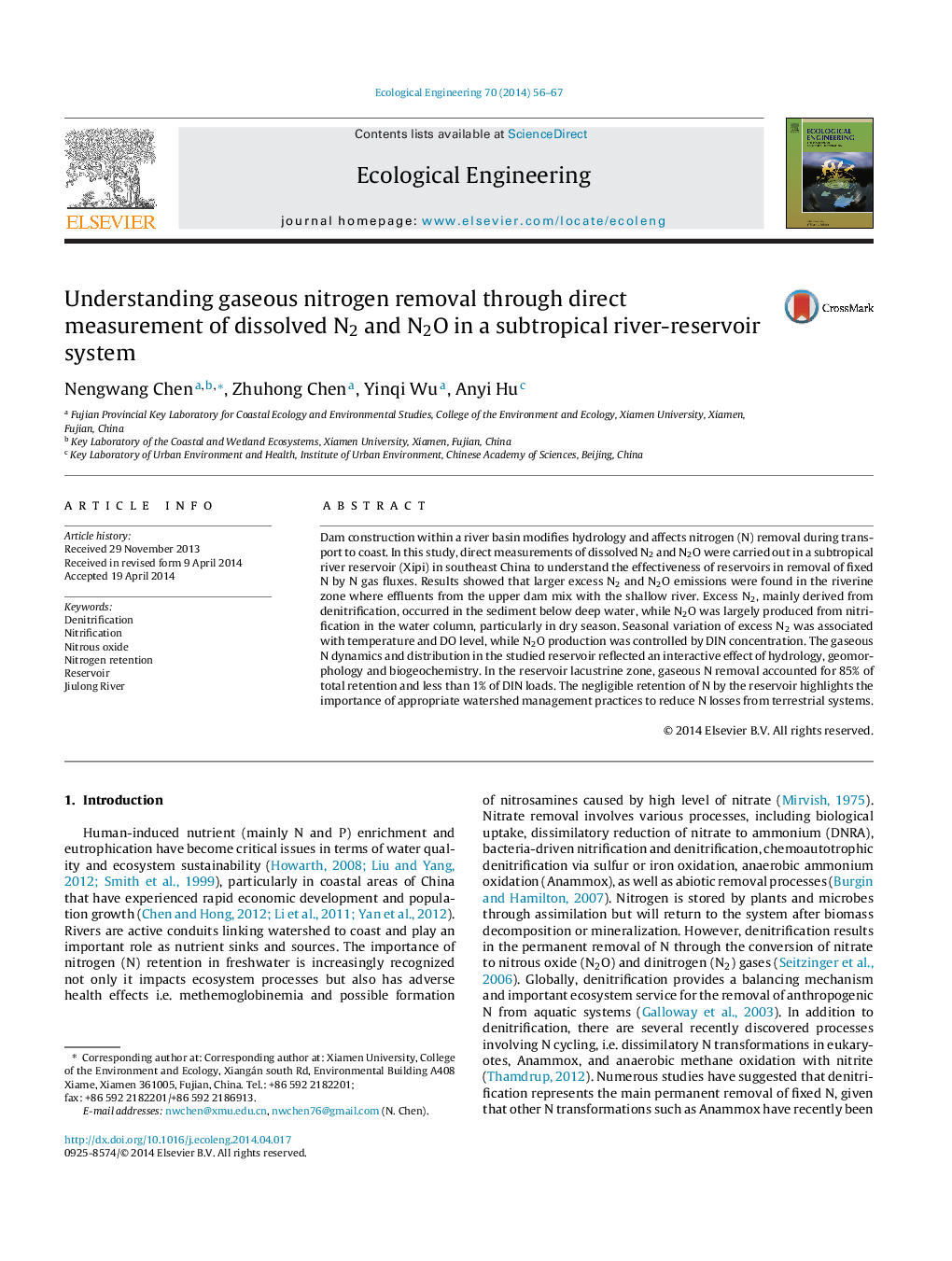| Article ID | Journal | Published Year | Pages | File Type |
|---|---|---|---|---|
| 6302103 | Ecological Engineering | 2014 | 12 Pages |
Abstract
Dam construction within a river basin modifies hydrology and affects nitrogen (N) removal during transport to coast. In this study, direct measurements of dissolved N2 and N2O were carried out in a subtropical river reservoir (Xipi) in southeast China to understand the effectiveness of reservoirs in removal of fixed N by N gas fluxes. Results showed that larger excess N2 and N2O emissions were found in the riverine zone where effluents from the upper dam mix with the shallow river. Excess N2, mainly derived from denitrification, occurred in the sediment below deep water, while N2O was largely produced from nitrification in the water column, particularly in dry season. Seasonal variation of excess N2 was associated with temperature and DO level, while N2O production was controlled by DIN concentration. The gaseous N dynamics and distribution in the studied reservoir reflected an interactive effect of hydrology, geomorphology and biogeochemistry. In the reservoir lacustrine zone, gaseous N removal accounted for 85% of total retention and less than 1% of DIN loads. The negligible retention of N by the reservoir highlights the importance of appropriate watershed management practices to reduce N losses from terrestrial systems.
Related Topics
Life Sciences
Agricultural and Biological Sciences
Ecology, Evolution, Behavior and Systematics
Authors
Nengwang Chen, Zhuhong Chen, Yinqi Wu, Anyi Hu,
